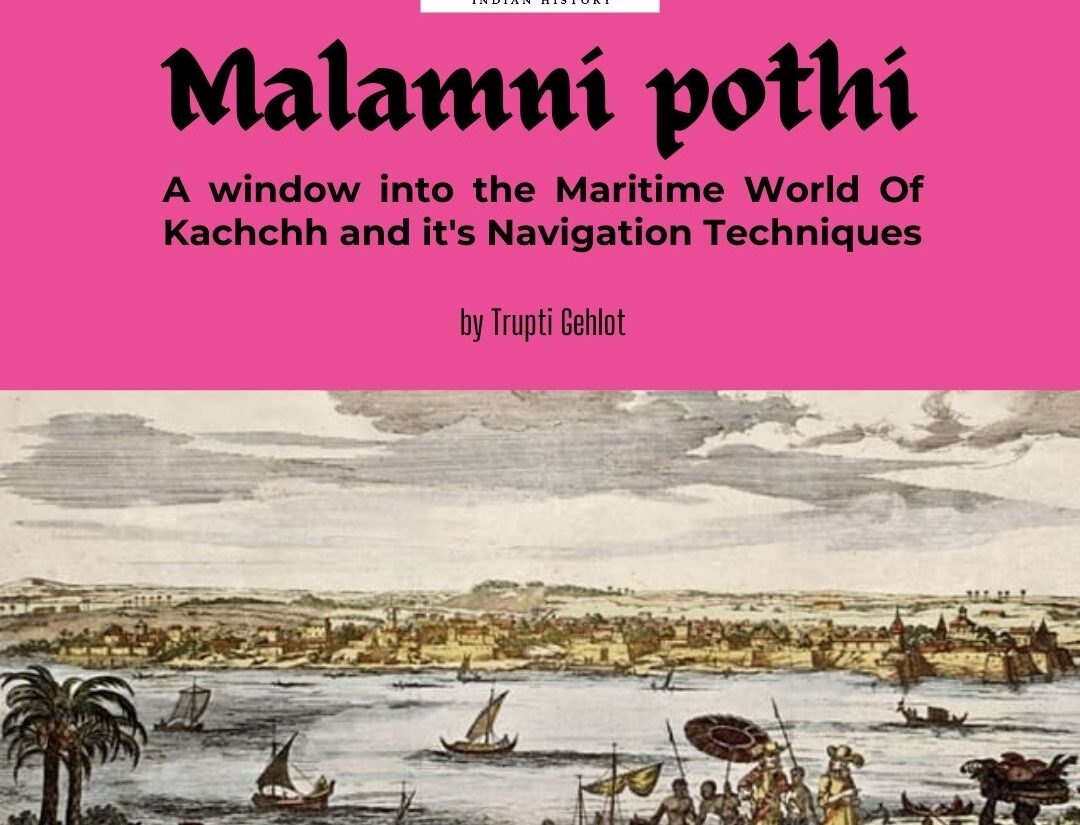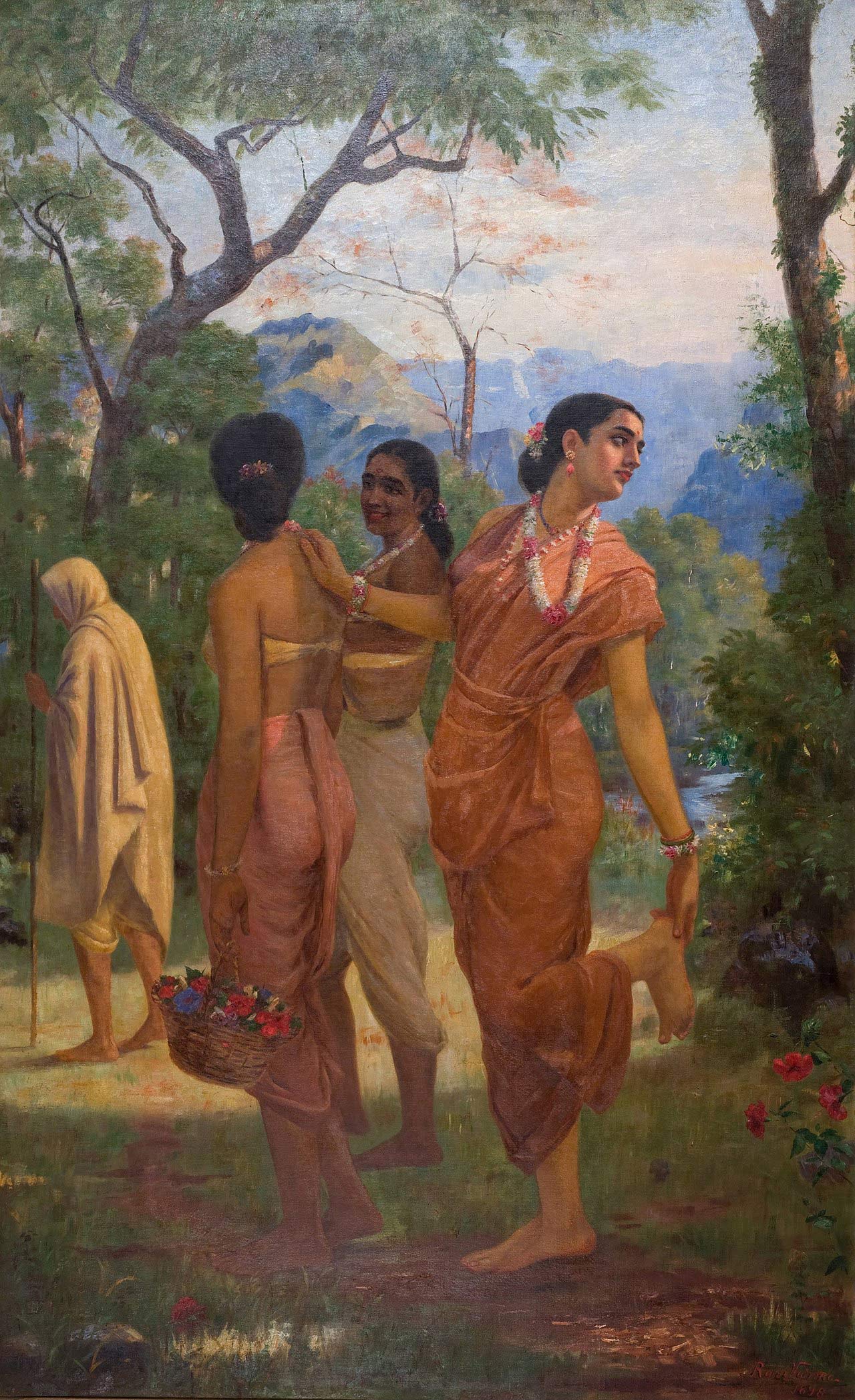Malamni Pothi: A Window into the Maritime World of Kachchh and its Navigation Techniques
- enrouteI
- July 6, 2023

Malam means Kachchi navigators and Malamni Pothis are the sailor’s manuals kept by Kachchi navigators. The Malamni Pothi manuscripts, written during the seventeenth and eighteenth centuries, represent a lesser-explored facet of maritime literature. The wealth of material within this extensive collection, spanning nearly 1,000 pages, is truly awe-inspiring. Volume after volume, folio after folio, all penned in the Kutchi version of the Gujarati script, contains a remarkably dense tapestry of information. These pages chronicle captivating accounts of voyages in progress, intricate navigation charts, meticulous astronomical calculations, exhaustive lists of malams’ names, tables, observations, and, in some instances, even intricate working drawings. While one might perceive these records as antiquated or primitive in comparison to modern techniques and technology, placing them in the context of their time and considering the available resources is nothing short of breathtaking.
Since the writers did not follow any format, the writing of the pothi is unorganized since the contemplated sea voyages were of a fixed duration from one port of call to another, and at the end of each destination a new malam would take over steering for the next destination and the pothis were handed over to different malams at different times. It takes random notes of what occurred to the mind of a writer. Thus, it flashes out calendars, nautical calculations, sketches, and sets of ideas in random order. Though it appears as a fragmented compilation, it is hugely important as a nautical manual, which summarizes voyages across the Indian Ocean. The very fact that navigators themselves took note of navigational technology in their dialect and script increases the value of this firsthand source.
Navigators relied on directions, hints, and indications that guided them through treacherous waters from the moment the ship set sail until it reached its safe destination. These master seamen meticulously followed the movements of constellations and zodiac signs, believing in their cosmic significance. The stars, seemingly scattered across the vast expanse of the universe, were carefully observed, while the nine planets were believed to govern life on Earth. Before embarking on a voyage, the navigators consulted the prevailing constellations to make forecasts and anticipate their impact.
In addition to celestial knowledge, the pothis also touch upon the principles of Vastu shastra, which guided the construction of houses and ships. These navigational manuals often provided valuable insights into unseen dangers and ways to combat them. During long voyages when fish and birds were scarce, boredom and restlessness among the crew were common. In such circumstances, superstitions took hold and added a fascinating dimension to the monotonous life at sea. Superstitions played a significant role in the seafarers’ world, providing a sense of certainty amidst the uncertainties they faced. For example, when approaching land, the navigators relied on various aids, one of which was the sighting of mareja, a snake-shaped fish. Spotting the mareja held great significance, and captains often announced a reward of a rupee or more for the crew member who sighted it first. The pothis dedicated attention to the mareja, sharing its importance and providing details for aspiring sailors and navigators to comprehend.
The pothis also contain repetitive prayers and invocations seeking divine intervention, reflecting the prevailing religious practices of the time. The refrain “Sahi sacho dhani a surv jane che, bija badha bhama che,” meaning “The true Master of the universe knows everything, and others are naïve,” encapsulates a memorable aphorism shared among navigators of that era.
The navigators in the northern Indian Ocean also commonly relied on maritime calendars to determine the optimal seasons for seafaring. These seasons were divided into post-monsoon months, spanning from September/October to mid-spring in March, and the closing of the season in April and May. The opening of navigation, known as Mausam Khulvi, and the closing, known as Aakhar Mausam or Chheli Ghosh, marked significant points in the sailing calendar. While the official sailing season was shorter, lasting around 281 to 301 days, local customs indicated a longer duration. Trade activities would commence on the fifteenth day of Bhado in September and conclude on the fifteenth of Jeth in May/June. The arrival of Suwallee boats from Zanzibar at Mandvi was most prevalent just before the onset of the southwest monsoon, as the period from May to mid-August was unfavourable for high-sea trading due to turbulent seas. Accordingly, when the southerly winds began to blow, the sailing masters would prepare the compass and refit the Kotias in their home ports.
Accurate distance calculation was vital for the success of a voyage, as even the slightest miscalculation could have disastrous consequences. However, measuring the distance directly at sea was impractical. To overcome this challenge, mariners developed a versatile measure known as the “zam”. The zam represented the typical sailing distance covered in three hours during favourable sea and weather conditions. A day’s sailing comprised eight zams. The term “zam” finds its roots in various languages: Zama in Sanskrit, yamam in Tamil, and dama in Maldivian Dhivehi. Originally denoting a three-hour time unit, it evolved into a measure of distance sailed within that duration. In seafaring jargon, it also refers to an angular arc equal to one-eighth of an isba or viral. In practice, a zam is approximately equivalent to 20 kilometres. Sailors along the coasts of the North Indian Ocean, from Arabia in the West to Indonesia in the East, commonly employ the concept of zam in their navigation.
Along with this, a brief overview of the seafarers’ socioeconomic position in the littoral society of Kachchh will help us better appreciate the malam’s maritime role. The shipyard was primarily run by Sunni Muslims from the Bhadala caste, while the crew consisted of diverse ethnic and caste groups. The crew’s hierarchy, influenced by Arab traditions, had positions like Nakhwa (captain), Malam (navigator), Sarang (second in command), and Khalasi (labourer). Ship owners held authority, but their social status was limited. Sailors received wages, and the privilege of limited private trade served as an incentive. Khalasis received cash and meal allowances, while Sarangs earned more. Nakhwas and Malams received double payment, regardless of sailing. Apprentices, called Petbalios, received meals but no wages. This intricate labour organization shaped the maritime ecosystem in Kachchh.
The information contained within the malam-ni-pothis not only reveals the navigators’ practical knowledge but also sheds light on their beliefs, rituals, and worldview. It showcases the intersection of science, spirituality, and folklore, creating a rich tapestry of wisdom that guided seafaring in the Kachchh region and shaped the maritime traditions of the time. In conclusion, the Malam ni pothis provide valuable insights into the advanced seafaring practices of the Kachchh region. These navigational manuals reveal the extensive voyages and profound knowledge of navigation among Kachchhi mariners. By integrating the pothi literature with other sources, we can better understand the navigational techniques and challenges faced by Kachchhi seamen.
References –
2016, Bridging the Gulf: Maritime Cultural Heritage of the Western Indian Ocean Himanshu Prabha Ray
Malamni Pothi: Treatise on Kachchhi Navigation Techniques by maritime historian Chhaya Goswami
A Gujarati Map and Pilot Book of the Indian Ocean, c. 1750 Samira Sheikh
- April 18, 2024
- 5 Min Read
- April 18, 2024
- 7 Min Read


























